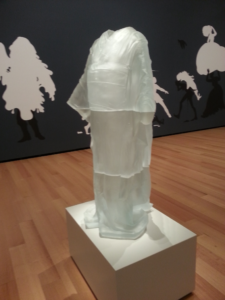Mechanism Underlying Acupuncture-Ameliorated Depressive Behaviors by Enhancing Glial Glutamate Transporter in Chronic Unpredictable Mild Stress (CUMS) Rats.
Kristen Sparrow • April 05, 2018


Mechanism Underlying Acupuncture-Ameliorated Depressive Behaviors by Enhancing Glial Glutamate Transporter in Chronic Unpredictable Mild Stress (CUMS) Rats.
Abstract
BACKGROUND Major depressive disorder (MDD) is a recurrent mental illness worldwide. The glutamatergic neurotransmission system is now a target for antidepressant therapy because it takes part in synaptic plasticity and cognition in physical condition and has a potential excitatory neurotoxicity in pathological conditions. Glial glutamate transporter EAAT2 performs 90% of Glu neurotransmission. Therefore, the aim of the study was to evaluate the effect of acupuncture on depressive behaviors and EAAT2 in CUMS. MATERIAL AND METHODS We randomly divided 56 male SD rats into a normal group, a model group, an acupuncture group, and a riluzole group. Rats in the model group, acupuncture group, and riluzole group underwent chronic unpredictable mild stress (CUMS) exposure for 21 days. The acupuncture group received electro-acupuncture stimulation on LI4 and LR3 for 5 continuous days per week for 4 weeks, and rats in the riluzole group received 4 mg/kg of riluzole orally (Sanofi, J20140092) for 4 weeks after undergoing CUMS stimulation. RESULTS Rats showed significantly increased sucrose consumption in the sucrose preference test paradigm, and showed elevated food intake and shortened latency in the novelty-suppressed feeding test paradigm after undergoing acupuncture therapy and riluzole treatment. The amelioration of depressive behavioral actions was consistent with increasing number of positive cells, protein, and mRNA expression of glial glutamate transporter EAAT2 in the hippocampus and PFC. CONCLUSIONS The results suggest that acupuncture and riluzole are both effective in improving sucrose consumption, latency, and food intake in CUMS rats. However, acupuncture appears to achieve an antidepressant effect later than riluzole does because it might need accumulated stimulation by enhancing EAAT2 expression. Enhance glial glutamate transporter EAAT2 in the hippocampus and PFC is a mechanism underlying the antidepressant effect of acupuncture.

